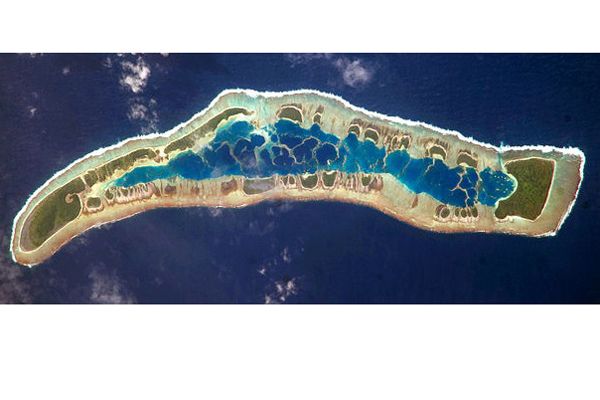Algae Provide A Food Bank For Starving Coral

(ISNS) -- All over the world, coral reefs, the elaborate graceful structures that serve as the infrastructure of tropical sea life, are turning a deathly white, bleached of all life, mortally wounded. When reefs die, the metropolis of teeming life that surrounds them disappears.
Scientists in Europe found that the bleaching process that kills the reefs is even more complex than they thought. While they were at it, they discovered that the relatively new scientific imaging technique they used to observe the dying reefs may have applications for all kinds of other research, including cancer treatment studies. Science sometimes works that way.
Coral formations consist of a thin layer of living coral that sits atop calcium carbonate skeletons of the dead coral. Corals form structures shaped like fans, leaves, or even brains. Some build entire walls in the sea, which can stretch thousands of miles, like the Great Barrier Reef off eastern Australia.
The biodiversity of reefs makes them akin to underwater rain forests and is extremely valuable to the fishing and tourism industries of nations that are lucky enough to have coral reefs close to their shores, explained Anders Meibom, a physicist at the Ecole Polytechnique Fédérale de Lausanne in Switzerland and one of the researchers who studied the reefs.
The reefs survive because of the unique symbiotic relationship between the coral, tiny marine invertebrates with hard shells, and the multitude of algae strains growing on the coral. The algae, besides providing the coral formations with color, also provide much of the nutrients corals need to survive. To do this, the algae take carbon and nitrogen from the water. The coral, in turn, protects the algae from predators.
"Until recently there has been a big debate about how corals get nitrogen," said Meibom.
"Basically, our study and our pilot study show very clearly… that it is the algae that effectively takes up the nitrogen in seawater," said Meibom. Without algae to help the coral absorb nitrogen, they become malnourished.
Sign up for the Live Science daily newsletter now
Get the world’s most fascinating discoveries delivered straight to your inbox.
Bleaching, which now affects even some of the largest and strongest reefs in the world, is the result of the rise in ocean temperatures, pollution and the increasing acidification of the ocean. Warm water has much less nutrients than cold water, so life in tropic seas is challenging. If ocean conditions get really bad, the algae eventually die and float away, leaving the reef bleached and dying, according to Christopher Langdon, a coral expert at the University of Miami, who was not involved in Meibom's research. The coral can carry on for a while, catching zooplankton on their own, but unless the environment improves, they will die, perhaps within months, Langdon said.
Switzerland is not a hotbed of coral reef research, Meibom admits, and the work reported in the May 14 issue of the journal mBio, was done in France, at the tropical aquarium and science museum in Paris and at Eilat, Israel, on the Red Sea. For the study, researchers filled a standard aquarium tank with corals and algae and five gallons of nutrient-poor seawater. They injected ammonium enriched with nitrogen-15, an uncommon form of nitrogen, as a pulse into the water. The nitrogen-15 was easy to trace and neither the algae nor the coral noticed a difference.
Then, using a 10-year-old technology called nanoscale secondary-ion spectrometry (NanoSIMS), the researchers were able to observe the molecules of nitrogen-15 as they accumulated inside the algal cells. Within 45 minutes, the NanoSIMS showed bright blue spots where the algae had taken the nitrogen and built crystals of uric acid to store it.
"They loved it," Meibom said "They soaked it up like a sponge."
The algae were creating a nutrient reservoir for the coral; something like a food bank for the coral to survive on through lean times.
Langdon said the coral study was the first time he heard about the algae storing nitrogen.
Meibom said the NanoSIMS technique was not new, but physicists like him rarely thought of using it on living tissues.
Physicists do not like to deal with tissues, he said, which they think of as "wet and gooey." Biologists are often unaware of the technology used in physics labs.
But the device, which allows scientists to watch where individual molecules go in complex living structures, could also be used to trace where medicines go in cells. For example, the technology could allow scientists to observe how chemotherapy attacks cancer cells. These kinds of observations could help drug researchers design targeted therapies that go directly to tumor cells.
"It opens a whole new sphere of science," he said.
Joel Shurkin is a freelance writer based in Baltimore. He is the author of nine books on science and the history of science, and has taught science journalism at Stanford University, UC Santa Cruz and the University of Alaska Fairbanks.
Inside Science News Service is supported by the American Institute of Physics.












